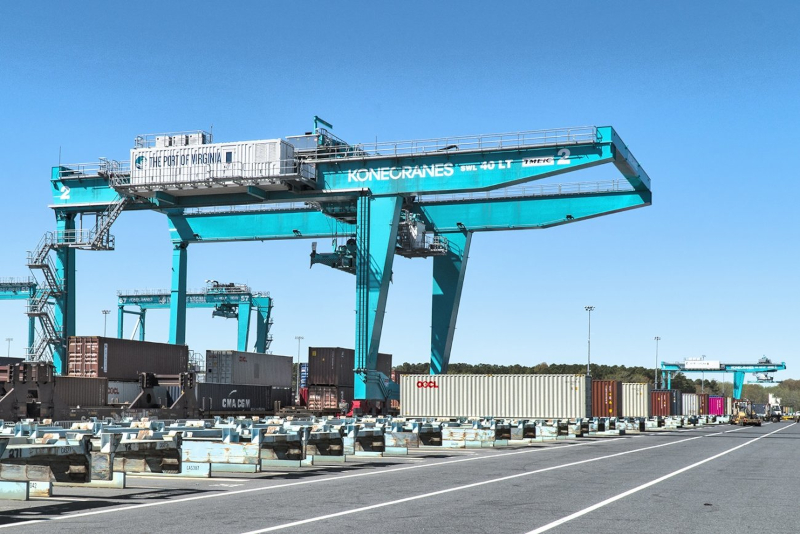Konecranes delivers 3 RMG cranes to Port of Virginia
18 January 2022Konecranes has delivered 3 more Rail-Mounted Gantry (RMG) cranes to the Port of Virginia US, for its Norfolk International Terminals (NIT) facility.
The order follows on from the successful deployment of four Konecranes RMGs of a similar design at the Virginia International Gateway (VIG). The order was booked in November 2021, and the cranes will be delivered by the end of 2023.
The Port of Virginia is a longstanding Konecranes customer, with a fleet of 116 Konecranes automated RMG (ARMG) cranes working at its Norfolk International (NIT) and Virginia International (VIG) container terminals.
The new cranes will work in a very similar way to the current Konecranes RMGs, loading and unloading trains and terminal trucks to serve the port’s customers in the Midwest and Ohio Valley.
The Konecranes RMGs will be remotely operated from a control center, so they will not have cabins. They will lift containers 1-over-2 high, handling double-stacked trains, with a lifting height of 12.2m (40’), a span of 23.5m (77’), and an outreach of 13m (42’ 8’’).
“The Port of Virginia has grown and flourished with Konecranes’ container handling technology. We are always finding new ways to improve our container handling operations, using everything at our disposal including the possibilities that Konecranes technology gives us,” said Rich Ceci, senior VP, Technology and Projects, VIG.
In January 2018, construction began on a $452m terminal optimization project at NIT that increased the terminal’s capacity by 46% within the same footprint. NIT has direct, on-dock rail access to Norfolk Southern’s Heartland Corridor, allowing second-day double-stack service to inland markets. NIT also gives access to CSX Intermodal. Expanded rail services are critical to the port’s customers in the Midwest and Ohio Valley.
This latest order of equipment from Konecranes continues the port’s investment in its terminals. The RMGs are part of an $80m expansion of the Central Rail Yard at NIT, which when complete will be able to handle more than 600,000 lifts annually.
